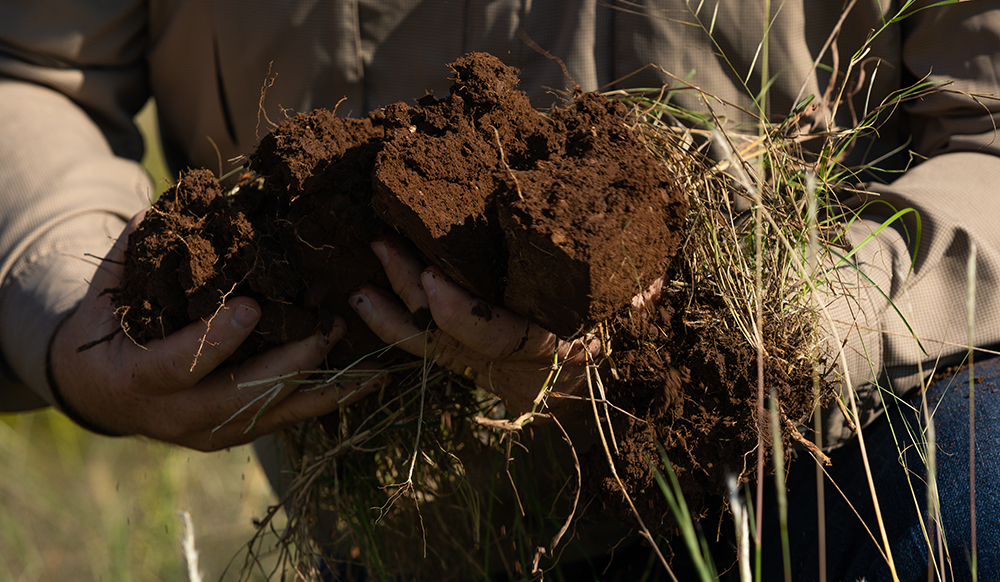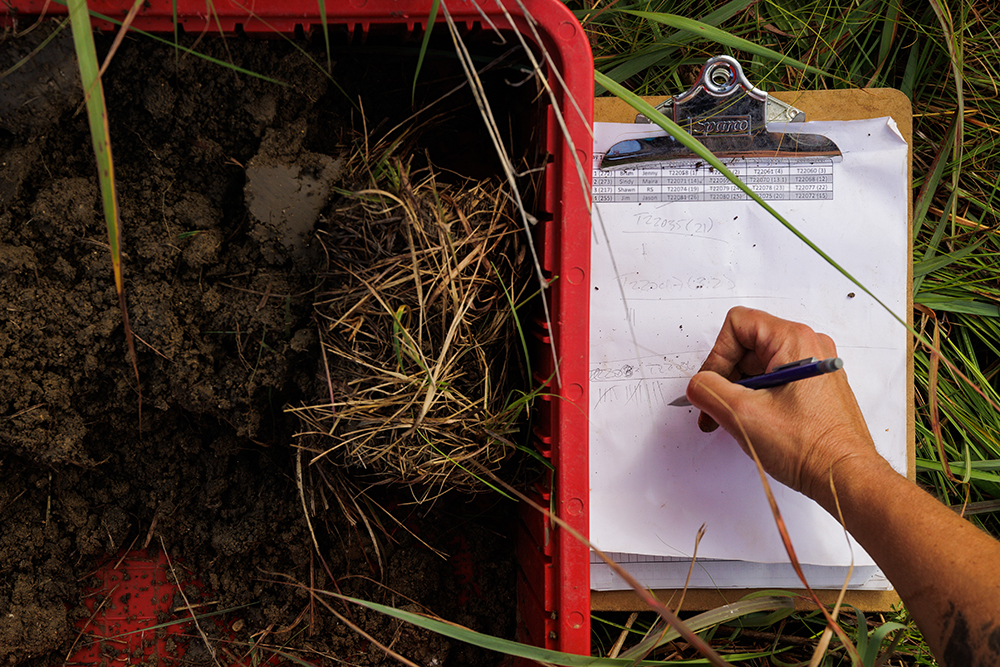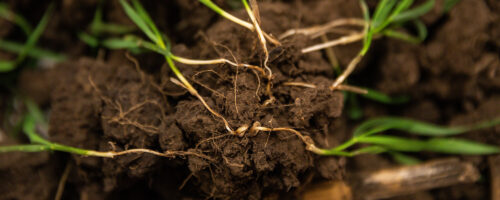An essential tool in the regenerative playbook is the Haney soil health test, which measures soil biological health by looking at nutrient availability and microbial activity. It reflects the complex ecosystem of the soil instead of relying only on the narrow measurement of “N, P and K.”
Developed by Rick Haney, a USDA-ARS researcher at the Grassland, Soil and Water Research Laboratory in Temple, Texas, this integrated approach uses chemical and biological soil test data to mimic nature’s approach to soil nutrient availability as best as can be done in a lab. The test, which the USDA has adopted as its official Soil Health Nutrient Tool, helps farmers and ranchers answer three important questions:
- What’s the current condition of my soil?
- Is my soil in balance?
- What can I do to improve my soil?
While it does help answer these questions, it’s important to note it will not completely answer them. By giving producers a better understanding of microbial activity and the nutrients naturally available in their soil, the Haney test can help them make smarter, more regenerative pasture-management decisions; guide their fertility program; improve their crops; and reduce input costs. In a large-scale study, Haney ran 3,200 samples, helping growers reduce nitrogen input costs by $15 per acre.

How To Take Samples For A Haney Soil Health Test
- Pull a furrow slice soil sample using either a standard soil core sampler, drill corer or spade.
- For fertility recommendations, take 10-15 cores at either 0-6” or 0-8” – making sure to keep consistent depths and not include sub soils.
- Make a single composite sample by combining all the cores in a plastic-lined paper soil bag.
- Add all the necessary sample ID information to the sample bag and ship the samples to the lab using a standard shipping box.
- Be sure to mark each sample and your box with “Haney test” or “soil health test” to ensure proper handling by the lab.
- Include any paperwork and soil submittal forms to ensure that the lab can easily identify your contact information and the tests you desire. New customers should include their physical address, phone number and email address.
- When temperatures are extremely hot, it is best to ship samples overnight.
How It Works
The Haney soil health test integrates chemical and biological measurements to assess multiple soil test values, including:
- Plant-available nutrients
- Soil respiration
- Water-soluble fractions of organic carbon (C) and organic nitrogen (N) and the ratio between them
It also provides nutrient recommendations for N, phosphorus (P2O5) and potassium (K2O) for a variety of crops, along with cover crop recommendations.
Note that the Haney test isn’t a complete evaluation of soil health, as it doesn’t account for things like water infiltration rates, water holding capacity or bulk density. It’s also just a snapshot in time of your soil health, since organic matter pools are in constant flux depending on microbial activity, management practices and the season.
Interpreting Test Results
The Haney test provides a unique health score for your soil, with measurements on available nutrients and microbial activity, along with cover crop recommendations — all critical data for making management decisions that will improve soil fertility and yield.
Your soil health score can range from 0 to 50 — the higher the better, though most soils will not score above 30. While land management has considerable influence on your score, your score potential can also be limited by regional constraints (e.g., soil type, geography and environmental factors). Certain soils will have greater soil-health score potential over others, even when similar management practices are introduced.
Below is a quick overview of key measurements that will be included in your test report. For a more detailed overview of how to interpret results, see the Haney Test Interpretation Guide from Ward Labs.

Soil Respiration Test
| What it is | Measures how much CO2-C soil produces in 24 hours following a significant drying and rewetting event |
| What it tells you | More CO2 = more microbial activity = higher potential for nutrient cycling, soil aggregate and organic matter formation |
| What the #s mean | For agricultural soils, <10 ppm is very low, and >200 ppm is very high |
| Takeaways | While soil type and climate can limit soil respiration potential, soil-health and farm management decisions can make a differenceHealthier soil can sustain higher respiration value during times of drought or extreme heat |
Water Extractable Organic Carbon (WEOC)
| What it is | Measures organic carbon (food) readily available to microbes |
| What it tells you | The quality of organic matter in your soil system (not a direct measurement of soil organic matter) |
| What the #s mean | Most soils range from 50 to 800 ppm, with the majority falling between 100 to 300 ppm |
| Takeaways | Native and perennial systems typically have higher WEOC values than row crop systemsInputs (e.g., manure, compost, cover crops) can increase carbon loading and cycling for higher WEOC levelsWEOC values fluctuate by season, with freezing and thawing events helping with the mechanical breakdown of residues |
Water Extractable Organic Nitrogen (WEON)
| What it is | Measures organic N available to microbes |
| What it tells you | Organic N acts like amino acids and proteins, boosting the carbon that microbes eat |
| What the #s mean | Soils can contain 5 to 100 ppm WEON, with most soils falling between 10 to 30 ppm |
| Takeaways | 30 ppm WEON = ~60 lbs of N to the acre at 6-inch sample depthHigher WEON promotes plant growth, but it’s important not to disrupt the C:N balance |
Organic C to Organic N Ratio (C:N Ratio)*
| What it is | Measures the ratio of organic C from the water extract to the amount of organic N in the water extract |
| What it tells you | Measures the balance between WEOC and WEON for optimal soil function |
| What the #s mean | A high C:N ratio >20 = no net N and P mineralization/N and P are unavailable to the plantA low C:N ratio <8 = burning up carbon and hurting soil healthC:N ratio between 8:1 and 15:1 = more N and P are released in the soil and available to growing plants |
| Takeaways | Organic C (energy) and organic N (nutrition) are both required for optimal soil function:High WEOC/Low WEON = lots of energy, but low-quality nutritionLow WEOC/High WEON = lots of nutrition, but little energy to carry out important functions |
Organic N to Inorganic N Ratio
| What it is | Measures ratio of organic N [part of soil organic matter (SOM) and harder to access by soil microbes] to inorganic N (plant-available N) |
| What it tells you | How much N is readily available in the soil |
| What the #s mean | Ratio <1 means most N in soil is nitrate and ammonium, resulting in N immobilizationCrop rotations or cover crops can raise ratios above 2 and 3Healthier soil builds an organic N pool greater than residual inorganic N (ratios >5) |
| Takeaways | Organic N balanced with organic C fuels biological system → feeds the plants → more efficient use of NTo mine organic N from SOM requires destroying SOM |

For additional details on pulling samples, visit Ward Labs at www.wardlab.com. Specific questions regarding biological/soil health testing may be directed to [email protected].
Comment
Leave a Reply
3 comment on: "How To Measure Soil Health With The Haney Test""



Elton Mau
April 27, 2024This helps me understand the Haney better.
Thanks!
Erik Emmens
July 1, 2024Hello,
I am looking for more information about the Haney test for the soil.
How does it works and what are the cost
Thank you for information,
Erik Emmens
Noble Research Institute
July 8, 2024It is wonderful to see your interest in the Haney Test. Our article here covers how the test works. Additional information can be found on the Ward Laboratories website. As of today, it appears the price is $65 USD, which includes the sample bag and analysis.